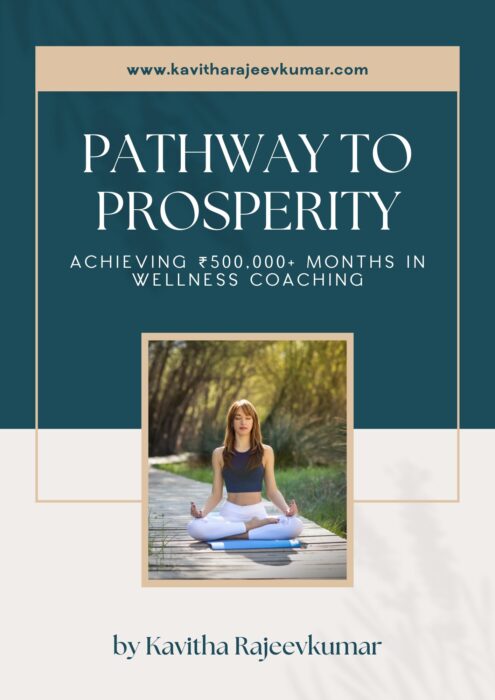You know, coaching isn’t just about skills or expertise. It’s about being a source of hope and inspiration for those seeking change and growth. You’ve put your heart and soul into your work. But, sometimes it feels like there’s a barrier between you and the people who really need your help. Today’s digital world is noisy and distracting. Standing out can seem impossible.
But hey, don’t lose heart! You’re not alone in this journey. We’ve got something special—a roadmap if you will—to guide us through the chaos of lead generation. It’s like having a compass. It points us to those who are waiting for someone like you. They need you to come along and make a difference in their lives.
Every step we take together is like finding a hidden treasure. It brings us closer to those who are eagerly waiting to connect with you. We aim to understand our audience better. We also aim to team up with like-minded people. We’re leaving no stone unturned in our pursuit of success.
So, take a deep breath and summon your courage. This is your time to shine in the vast world of coaching. With knowledge as our weapon and passion as our fuel, we’re setting off on this journey together. Let’s face the challenges of lead generation directly. We’ll do it with strong determination and resolve. Your destiny is calling, my friend—let’s grab it with both hands!
- Define Your Target Audience:
Identify your ideal clients by understanding their demographics, challenges, and goals. Tailor your coaching services to address their specific needs and pain points. This focus ensures that your marketing resonates with the right audience. It increases the likelihood of generating leads.
Imagine you’re a coach specializing in career transitions. You’ve spent years honing your skills. Now, you’re eager to help others navigate the murky waters of job changes. But who exactly are these people you’re aiming to assist?
Well, meet Abigail. She’s in her mid-30s, feeling stuck in her current job, yearning for a change but unsure where to start. Then there’s Harry, fresh out of college, eager to land his dream job but lacking the guidance to do so. These are your potential clients, each with their unique stories, challenges, and aspirations.
Defining your target audience means understanding Abigail, Harry, and countless others like them. It’s about digging deep to uncover their fears, desires, and pain points. Maybe Abigail is afraid of taking the leap because she’s uncertain about her skills. Perhaps Harry feels overwhelmed by the job market’s competitiveness.
By finding these details, you can tailor your coaching to their needs. For Abigail, it might mean offering confidence-building exercises and resume workshops. For Harry, it could involve providing interview preparation sessions and networking tips.
Remember, the more you understand your audience, the better you can connect with them. So, take the time to listen to their stories, empathize with their struggles, and show them that you’re the coach they’ve been searching for.
2. Create Compelling Content:
You’re probably scrolling through your social media feed, just like I did till four years ago. You feel overwhelmed by the constant stream of posts and ads fighting for your attention. Then, out of nowhere, a video appears. It’s from a coach you’ve never come across, but there’s something about the title that speaks to you. Intrigued, you decide to give it a chance and hit play, eager to see what this unfamiliar voice has to offer.
As the video unfolds, you find yourself nodding along. You soak in valuable tips tailored to your challenges. Before you know it, you’re hooked. You devour more content from this new source of inspiration.
That’s the power of compelling content.
It could be a blog post, a podcast episode, or a great social media story. Making content that speaks directly to your audience is key to getting leads. But what makes content compelling?
Let’s break it down.
First of all, it’s all about relevance. Your content should answer the burning questions of your target audience. It should also address their pain points. Put yourself in their shoes—what keeps them up at night? What challenges do they face? By understanding their needs, you can create content that resonates on a deeper level.
Take Rina, a career coach specializing in helping millennials navigate the job market. She focuses on topics like “How to Land Your Dream Job Straight Out of College” and “Navigating Career Transitions in Your 20s.” She does not give generic career advice.” Rina’s content becomes a magnet for young professionals. It does this by focusing on their specific concerns.
Authenticity is key. People crave genuine connections in a world saturated with polished perfection. Share your experiences, triumphs, and even failures. They make you seem human and build trust with your audience.

Consider Tom. He is a fitness coach who struggled with weight loss. But, then he transformed his own life. He shares his journey through his blog and social media posts. He offers candid insights and practical advice. His realness attracts leads. It also creates a loyal community. They resonate with his story.
Make it engaging. They cover eye-catching visuals and storytelling techniques. These captivate the imagination. Find creative ways to grab and hold your audience’s attention. Do it through humor, emotion, or suspense. Aim to leave a lasting impression. It should keep them coming back for more.
Take Maya, a life coach with a knack for storytelling. She writes dry, instructional blog posts. Instead, she weaves compelling tales. They draw readers in and make them feel like part of an unfolding adventure. Maya taps into the power of storytelling. She turns dull topics into exciting journeys of self-discovery.
Compelling content is the cornerstone of effective lead generation. Creating relevant, real, and engaging content attracts leads. It also builds meaningful connections. These connections are the foundation for lasting relationships. So, don’t create content. Craft experiences that have a big impact on your audience.
Create high-quality content. It should show your expertise and help your audience. This could include blog posts, videos, podcasts, or posts on social media. They offer insights, tips, and solutions related to your coaching niche. Engaging content attracts leads. It also makes you a trusted authority.
3. Optimize Your Website:
Your website is like your digital storefront. It’s where potential clients stop by to learn about you and your coaching. But imagine if your store had a cluttered layout. It had dim lighting and confusing signs. Would customers stick around? Probably not. That’s why optimizing your website is crucial to attracting and keeping leads.
A well-organized, good-looking website acts like a magnet. It draws visitors in and keeps them engaged. Start by ensuring your website is easy to navigate, with clear menus and intuitive design. Imagine you’re a visitor to your site—can you find what you’re looking for? If not, it’s time to streamline.
Next, let’s talk about content. Your website shouldn’t just look good; it should also provide value to your audience. Consider adding a blog. You can share insightful articles, tips, and success stories. They should relate to your coaching niche. For instance, if you’re a fitness coach, you could write about good workouts. You could also write about healthy eating or inspiring client changes. By offering valuable content, you show your expertise. You also keep visitors coming back for more.
Now, let’s talk about the importance of mobile optimization. Today, many people browse the internet on their smartphones or tablets. Your website may not work on mobile. This could make you miss out on many leads. Ensure your website is responsive. This means it adjusts to different screen sizes. It ensures a smooth and enjoyable browsing experience for all visitors
Don’t forget about the power of calls-to-action (CTAs). These are prompts. They encourage visitors to take a specific action. For example, you could sign up for a free or paid consultation. Or, you could download a resource. You could also subscribe to your email list or newsletter. Place CTAs at strategic locations throughout your website to guide visitors toward conversion. Remember, the goal isn’t only to attract visitors—it’s to turn them into paying clients.
Optimizing your website is about creating a welcoming online space. It should be informative and user-friendly. Such a site attracts and keeps leads. By investing time and effort in your website. You’re laying the foundation for long-term success.
4. Use Lead Magnets:
Imagine you’re walking through a busy marketplace. You come across a stall offering free samples of the most delicious treats. You’re intrigued, so you stop by. In exchange for your contact information, you get a small taste of what they have to offer. That, my friend, is the essence of a lead magnet.
Lead magnets are like irresistible free samples. They tempt potential leads to engage with you by offering something valuable. It could be an ebook full of tips. Or, a quiz to uncover strengths. Or, a guide for common challenges. These “lead magnets” are your secret weapon. They help you capture your audience’s attention.
Let’s say you’re a life coach specializing in mindfulness and stress management. You could offer a free meditation audio track as a lead magnet. This gives value to your audience. It also shows you as an expert in your field. As they enjoy your free offering, they’re more likely to trust you with their journey to better health.

But making a lead magnet isn’t about giving away freebies. It’s about starting a conversation. Once you’ve captured a lead’s attention with your enticing offer. Then, you must keep nurturing the relationship. Follow up with personalized emails. Share more valuable insights. Invite them to take the next step with you.
The key to an effective lead magnet is relevance and value. Put yourself in your audience’s shoes. What problem are they facing? How can you offer a solution that leaves them wanting more? Create lead magnets that match your audience’s needs and desires. This will help you attract more leads and build a loyal following. They will be eager to join you on the coaching journey.
Offer valuable resources as lead magnets. These resources can be ebooks, guides, or quizzes. They are to incentivize visitors to share their contact information. Create compelling opt-in forms or landing pages to capture leads. These lead magnets attract potential clients. They also let you nurture them with targeted email campaigns.
5. Leverage Social Media:
Social media is a bustling marketplace. People gather there to share stories, seek advice, and connect with others. As a coach, using this digital hub can expand your reach. It can also attract potential clients.
Neha is a life coach specializing in personal development. Neha has a passion for helping others thrive. She saw the power of social media for reaching her audience. She created engaging content. It resonated with her target audience. She shared motivational tips, success stories, and thought-provoking quotes. She shared them on platforms like Instagram and Facebook.
Neha built a loyal community around her brand. She did it through regular posting and real interaction with her followers. She responded to comments. She asked questions and encouraged discussions. This fostered a sense of belonging and trust among her audience.
Moreover, Neha leveraged the diverse features of social media to amplify her presence. She used Instagram Stories to show behind-the-scenes glimpses of her coaching process. She held live Q&A sessions to address urgent concerns. She worked with influencers to reach new audiences.
Neha harnessed social media’s power. She used it to attract leads and build connections with people seeking her guidance. It could be a direct message expressing interest in her services. Or, it could be a referral from a satisfied client. Social media became a key tool in Neha’s lead-generation work.
As a coach, you can use social media to show your skills and draw in potential clients. You can share useful content, join discussions, or partner with influencers. The possibilities are vast. They offer you the chance to have a big impact in coaching..
6. Build Strategic Partnerships:
Do you consider yourself alone in your coaching business journey? I know you’re. But, let me tell you, you’re not alone in this journey. You’ve got allies—other businesses or influencers—who share your goals and values. Together, you are a powerful force that others must take into account.
Think of it like this: You’re a fitness coach. You’re passionate about helping people be healthier. You team up with a local organic grocery store. They recommend your services to their customers. You promote their products to your clients. It’s a win-win!
Or consider this: You’re a life coach specializing in mindfulness. You connect with a popular wellness blogger who shares your passion. They feature you in their blog posts, and you invite them to speak at your workshops. Your audience grows, and so does your impact.

Going to a networking event connects you with like-minded professionals. This boosts your business and network. You share ideas and find collaboration chances through meaningful talks and shared experiences.
These partnerships aren’t about expanding your reach—they’re about creating meaningful connections. Find partners whose values align with yours, and explore ways to support each other. You can form strategic partnerships through joint events, co-branded content, or mutual referrals. They can boost your lead generation. They can lift your coaching business to new heights.
7. Put in place a Follow-Up System:
Imagine you’re at a networking event. You chat with someone about your coaching. You swap contacts, share laughs, and agree to meet again soon. But weeks later, this promising lead fades away. It’s lost in your daily tasks and responsibilities.
This scenario is all too common in the world of coaching. You must do more than contact potential clients. You must also nurture those connections over time. That’s where implementing a follow-up system becomes essential.
Think of your follow-up system as a nurturing garden. Each interaction with a potential lead is like watering a seed. Without regular attention and care, those seeds may never blossom into fruitful relationships. But, with strategic follow-up, you can grow those connections. You can also guide leads through the decision-making process.
So, what does a follow-up system entail? It starts with consistency. Set aside time each week to reach out to leads. Do it through personalized emails, phone calls, or follow-up meetings. Remember, persistence pays off. If someone doesn’t respond to your first message doesn’t mean they’re not interested.
Personalization is also key. Tailor your follow-up communications to each person. Mention specific conversations or interests you shared during your first talk. This personal touch shows that you value their relationship.
Consider this example. Mohith is a career coach. He meets a potential client named Allan at a networking event. They bond over their shared love of hiking and discuss Allan’s career goals. In his follow-up email, Mohith mentions their talk about hiking. He includes a link to an article on work-life balance. This kind gesture strengthens their connection. It also helps Allan, boosting Mohith’s credibility as a coach.
Also, offer more resources or support during the follow-up. You can provide value at every touchpoint. This keeps leads engaged and shows your expertise. You can do this by sharing useful articles. You can also invite leads to a free webinar or offer a free coaching session.
Finally, track your follow-up efforts and check their effectiveness over time. Keep detailed records of your interactions with leads. Note any responses or needed follow-up. This data helps you stay organized. It also lets you refine your approach based on what resonates with your audience.
In essence, a good follow-up system is the glue. It holds your lead-generation efforts together. Stay connected. Offer value. Nurture relationships. You’ll convert more leads into clients. You’ll also build a network of loyal advocates who sing your praises to others. So, don’t let those promising connections slip through the cracks. Follow up on them, follow through, and watch your coaching business flourish.
We are coming to the end of our journey. We have covered the seven key steps of lead generation for coaches. I hope you feel inspired and empowered to take action. But let’s be honest. Doing these things can feel overwhelming. This is especially true. You’re juggling the demands of running your coaching business.
That’s why I’m here to offer you a helping hand. Setting up and doing these strategies well needs more than a blog post. It needs personalized guidance. This guidance must fit your unique business goals and challenges. That’s where I come in.
Hi, I’m Kavitha, and I’ve been where you are. I understand the struggles and frustrations of navigating the world of lead generation. But I’ve also seen amazing change. It comes from using specific ways to attract and convert leads.
If you’re ready to take your coaching business to the next level, I invite you to book a call with me. Let’s dive deep into your business. We will find areas for growth and make strategies to help you reach your goals. Whether you’re starting or looking to grow your business, I’m here to give you the help and advice you need.
In the meantime, you might enjoy reading this e-book “Smart Scaling Strategies for Coaching Business“. Grab your copy here.

